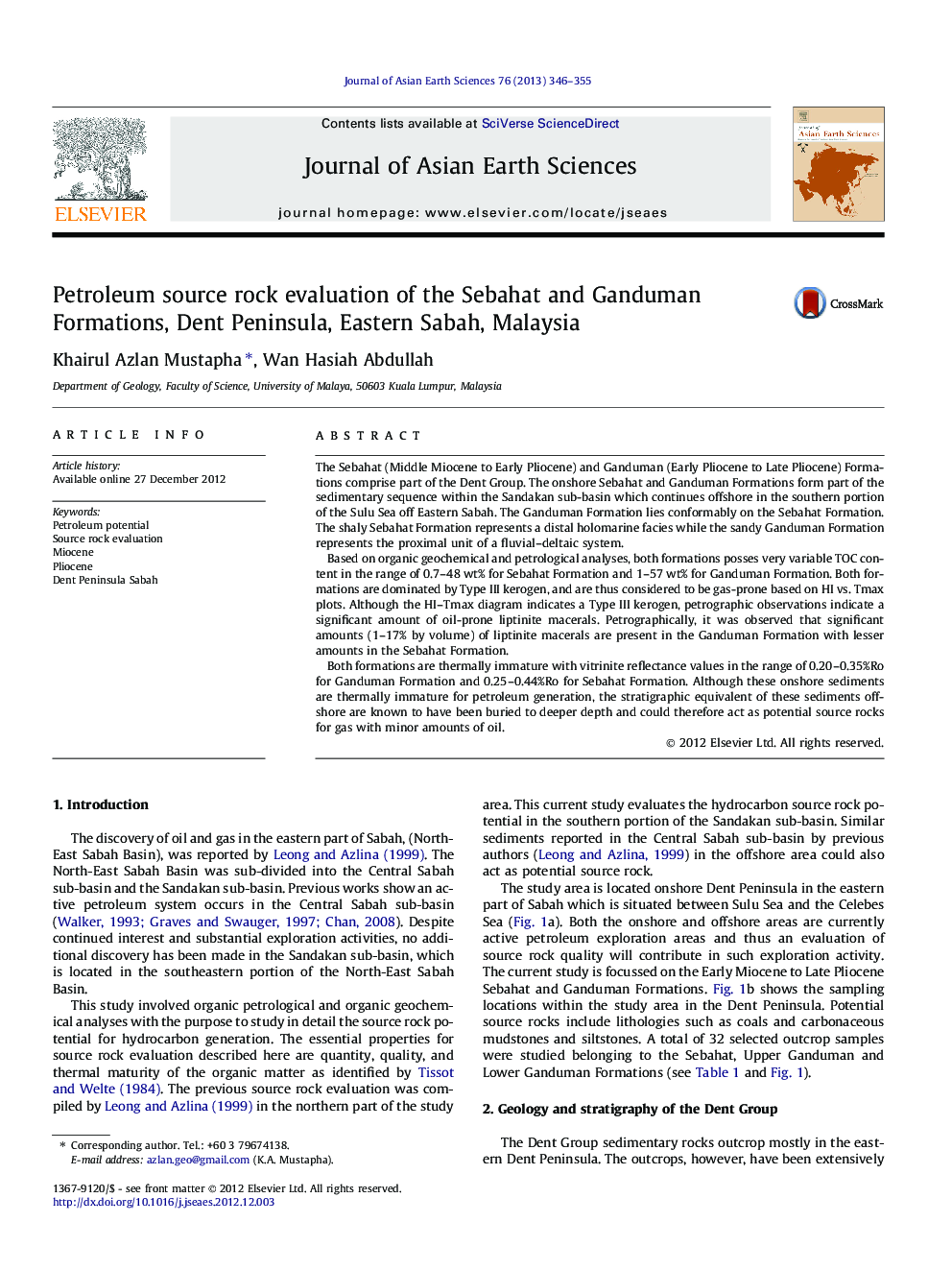| کد مقاله | کد نشریه | سال انتشار | مقاله انگلیسی | نسخه تمام متن |
|---|---|---|---|---|
| 4731036 | 1640391 | 2013 | 10 صفحه PDF | دانلود رایگان |
The Sebahat (Middle Miocene to Early Pliocene) and Ganduman (Early Pliocene to Late Pliocene) Formations comprise part of the Dent Group. The onshore Sebahat and Ganduman Formations form part of the sedimentary sequence within the Sandakan sub-basin which continues offshore in the southern portion of the Sulu Sea off Eastern Sabah. The Ganduman Formation lies conformably on the Sebahat Formation. The shaly Sebahat Formation represents a distal holomarine facies while the sandy Ganduman Formation represents the proximal unit of a fluvial–deltaic system.Based on organic geochemical and petrological analyses, both formations posses very variable TOC content in the range of 0.7–48 wt% for Sebahat Formation and 1–57 wt% for Ganduman Formation. Both formations are dominated by Type III kerogen, and are thus considered to be gas-prone based on HI vs. Tmax plots. Although the HI–Tmax diagram indicates a Type III kerogen, petrographic observations indicate a significant amount of oil-prone liptinite macerals. Petrographically, it was observed that significant amounts (1–17% by volume) of liptinite macerals are present in the Ganduman Formation with lesser amounts in the Sebahat Formation.Both formations are thermally immature with vitrinite reflectance values in the range of 0.20–0.35%Ro for Ganduman Formation and 0.25–0.44%Ro for Sebahat Formation. Although these onshore sediments are thermally immature for petroleum generation, the stratigraphic equivalent of these sediments offshore are known to have been buried to deeper depth and could therefore act as potential source rocks for gas with minor amounts of oil.
► The petroleum potential of Sebahat and Ganduman Fms sedimentary rocks were evaluated.
► The source rock quality is generally fair to good for hydrocarbon generation.
► Organic matter consists predominantly of Type III kerogen.
► The sediments however are still thermally immature for hydrocarbon generation.
Journal: Journal of Asian Earth Sciences - Volume 76, 25 October 2013, Pages 346–355
